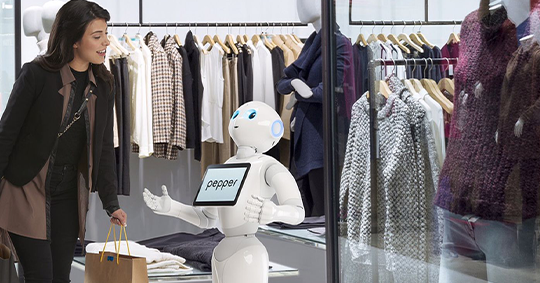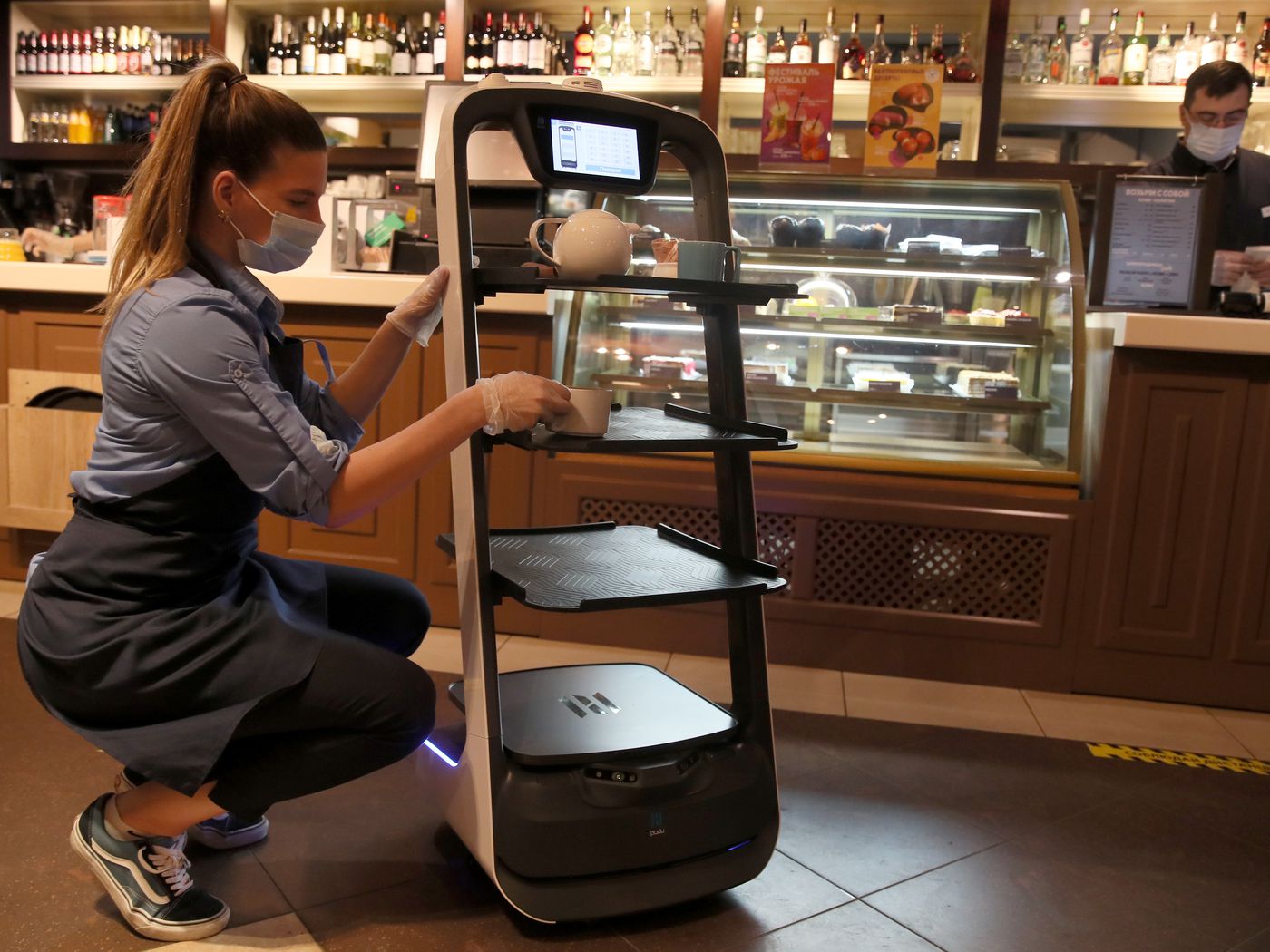How Do Robots Help Small Businesses Scale?
Apr 15, 2022 By Natalia Galvis
By Evelyn Long

Robots are becoming a reality for small enterprises and shaping how people conduct business. From manufacturing to food service, automation technologies are amplifying the workforce.
When implementing robots in a small business, benefits everyone, including employees and customers. In fact, 65% of employees feel less stressed at work because of the automation of manual tasks.
When everyone adapts to new technologies, it’s a win-win, no matter how small a small business might be. Here’s how robots can help small companies to scale.
1. Increases Productivity
Robots deliver the opportunity to assist repetitive tasks – from greeting customers to processing thousands of transactions, offering delivery services, and more.
For instance, Domino’s Pizza is innovating the pizza delivery experience by testing autonomous vehicles and automating pizza deliveries. When small businesses invest in automation, they outsource menial tasks and can serve customers more efficiently.
This example is applicable for much smaller businesses now, too, thanks to growing innovation in robotics. Restaurants can try out delivery robots to speed up how quickly food can be brought to customers, allowing servers to focus on interaction and orders. In a time where hospitality workers can be hard to find, robots let businesses amp up productivity without straining existing staff.
As a result, robots help fill the gaps, freeing up time and allowing employees to be productive in more ways.
2. Improves Operational Efficiency
Humans are prone to oversight, especially when they multitask. However, robots are paving the way for businesses to avoid serious errors and consequences. When properly programmed, a robot rarely makes a mistake. In turn, companies won’t have to worry about the additional expenses it could cost from a preventable error.
For instance, when a manufacturing employee makes a slip-up on an assembly line, the error can affect everyone down the line. That’s why task automation is crucial to getting things done correctly the first time around. Using robotics ensures small tasks result in highly effective turnaround times and reduces costs in the long run.
3. Supplements Worker Shortages
With the workforce experiencing the Great Resignation, many small businesses face difficulties hiring talented people. However, companies can satisfy the shortage by incorporating robot workers.
RobotLab provides robots that assist small businesses with customer service solutions, food delivery, and other essential, repetitive tasks that may otherwise be deprioritized if the business struggles with staffing. Robots can also help with supply chain logistics, medical information, and other necessary tasks that allow human professionals to focus on higher-impact work.
While the semi-autonomous system still relies on its human counterparts, the company can grow its facilities by producing higher yields.
4. Improves Small Business Culture
Culture in the workplace is crucial to keeping team spirit alive and accomplishing greater output. When small businesses embrace innovations, they can put people first and strengthen company culture.
For example, automating mundane tasks gives employees more freedom and flexibility throughout their workday. When they bring technology into the workplace, workers can improve their job performance. As a result, companies make the environment a more sustainable workplace.
While robots are expected to fulfill 38% of jobs in the U.S. by 2030, that doesn’t mean they are replacing employees. In fact, robots are elevating workers’ job titles by working alongside them.
Technology takes the struggle out of humans’ responsibilities and makes time more valuable. These innovations allow individuals to focus on high-value tasks. In turn, wages increase, businesses scale, and companies get to hire more people – creating a happier, more productive workplace in every facility.
5. Enhances Safety for Employees
Robots are stabilizing worker safety by performing jobs with dangerous tasks. For instance, factories and assembly lines often have heavy machinery that heats up and has sharp edges.
When companies place a robot in these settings, this makes the workers much less prone to injuries. Robots can work in sync with the heavy machinery it’s assisting and can’t sustain any harm. Therefore, small businesses get to save money and avoid despair when a robot needs a repair rather than a worker’s hand.
How Small Businesses Can Prepare for Robots
Thankfully, robots are more affordable and readily available today for small businesses. If a business owner wishes to implement automation into their processes, here are a few things to help get started:
- Map: Businesses need to map out their customer experience and determine which areas of repetitive tasks they can automate to deliver the best results. Companies often recover valuable time by automating the generation of invoices and other documents.
- Analyze: Analyze the business’s operations and identify the most low-value tasks. For instance, real estate agents are rolling out more home showings with robots and displaying customized information about properties.
- Enhance: Find ways to enhance the customer experience. Salespeople are making headway in the real estate industry by using artificial intelligence-powered chatbots. These chatbots can pull personalized recommendations, let clients make decisions, and converse in a human-like way to enhance the search listing experience.
Scale Small Businesses With Robotics
Simply put, robotics are the future of small businesses. With the productivity that a company receives integrating robots, they experience further growth at a higher rate. Overall, robots support increased sales, business profitability, and performance — leaving businesses to scale in the long run.
Discover more about Business and Robots with RobotLAB!

Check more information here: https://business.robotlab.com/
Author
 Evelyn Long is the editor-in-chief of Renovated and a writer with experience covering green technology and construction for publishers like NCCER and BUILD.
Evelyn Long is the editor-in-chief of Renovated and a writer with experience covering green technology and construction for publishers like NCCER and BUILD.















.webp?width=124&height=124&name=image%20(1).webp)
.webp?width=169&height=87&name=image%20(2).webp)



































